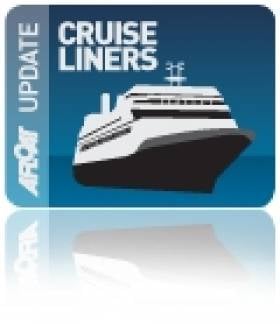Displaying items by tag: European Cruiser Association
Mega-Yacht Cruiseship Returns
#MEGA-YACHTCRUISESHIP – Nearly a year ago to her Irish debut the Le Boréal a mega-yacht cruiseship called to Dublin Port today, writes Jehan Ashmore.
The sleek sweeping lines of the 132 berth and 264 maximum capacity vessel is designed with French flair by Jean-Philippe Nuel and built with Italian expertise by Fincantieri. She is scheduled to depart from the capital tonight. For more information and photographs of the ship, click HERE.
When she entered service for Compagnie du Ponant, the only French cruiseship operator won for the Best New Ship of the Year 2010. The prize was rewarded by the European Cruiser Association for more visit www.eucras.com
French Mega-Yacht Cruiseship Bound for Dublin Debut
Le Boréal was to make her maiden Irish call to Cobh but the capital which was also scheduled for the 10 May will instead take this honour from the one-year old ship which is operated by France's only cruise operator, Compagnie du Ponant.
The 142m long ship was built by the Italian Fincantieri shipyard won the 'Best New ship of the Year 2010' by the European Cruiser Association. She can take 264 guests in an interior which has a distinctly French flair from the hand of designer Jean-Philippe Nuel. A crew of 139 look after the running of the six-decked vessel which has 132 luxurious appointed cabins.
Late last month Le Boréal was joined by her new sister L'Austral which was inaugurated into service during a fireworks display off the company's headquarters in Marseille. Both ships made a cruise to the Frioul Islands and famous Chateau d'If and later that day their Le Levant also took part in the celebrations when the trio returned off Marseille.
The other two vessels of the five-strong fleet are the Le Ponant, a three-masted 88m sailing ship and Le Diamant (also due Dublin and Cork this season) form a fleet of bijou cruiseships which are small in size and as such can access remote and exclusive ports of call.
Compagnie du Ponant was established in 1988 and is owned by the CMA CGM Group, the world's third largest container shipping group. The company is an integral part of French maritime heritage with origins from the renowned Compagnie Générale Transatlantique French Line.































































